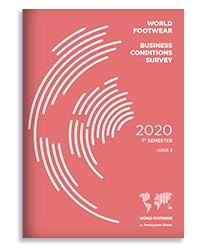Footwear: several challenges arising from the Covid-19 crisis

As they are non-essential goods, clothing, footwear and other fashion items are being particularly hit with the impact of the spread of Covid-19. Retailers and manufacturers are facing several challenges, and will continue to do so
As we navigate the epidemic and sanitary crisis the immediate consequences for fashion companies are known: retail locations are closed in many countries; orders have been suspended or cancelled, impacting the manufacturing businesses; orders pre-epidemic are on the verge of arriving to closed stores or not leaving warehouses and inventories pile up. Employees of many shops and factories are at home or have been laid off. So far, the scenario is known and familiar to many.
The future
The questions starting to concern the businesses relate to the future. The length of the lockdowns and the quarantines will have an impact on the extent of the hit, but many other factors will have to be taken into consideration.Depending on when and how the return to the so called “normality” takes place, many questions will arise. Will retailers have the articles they need to put on the shelves? Or more accurately, will the articles in the stores be of the right type not to miss the recovery? Some might argue that retailers will accumulate inventory, so it won’t be a question of missing articles. However, let us not ignore that fashion items are particularly sensitive to the time element and businesses might have to prepare to the fact that items pilling up might simply go out of style.
As stores close the doors, many orders are cancelled, and the survival of many manufacturing businesses is at risk. The question now seems to be how long the factories will be able to survive with little or no orders coming in. In a limit situation when the time comes, and retail needs items to put on the shelves, will the suppliers from the past still be around?
Online
Online is being referred to as many as the holy Grail in a crisis with no precedents in modern times. The big question seems to be: are companies ready for a boom in online orders? It doesn’t seem to be the case. Several stores are having issues with the delivery times of online orders, and according to what was recently reported by The Economist, Next, an UK -based fashion retailer reopened its website on the 14th April, but had to close it after two hours of operation, as it reached the maximum number of orders it could fulfil with reduced staff.Big brands and big retailers will have the ability to recover quickly, if their supplier manage to survive. But small brands and small companies will have more difficulties, in terms of resources, being those personnel and financial.
Buying Experience
All the issues concerning the buying experience in the post sanitary crisis adds another layer of uncertainty. Even, and when governments start to alleviate some of the restriction measures they have put in place to face the sanitary crisis, the confidence of the consumer will certainly be impacted by the weeks of confinement. Some analysts are already working with categories of consumers in the near future, and one cannot ignore that a percentage will focus on essential goods, avoiding all that can be avoided. Others might not want to go to brick and mortar fearing they are putting their health at risk. This will raise other questions and companies will have to reinvent themselves and adapt quickly to that new environment.
Scenarios and forecasts
Cited by The Economist, research firm Bernstein is estimating that American retail sales in March fell by 8.7% from February, the biggest monthly decline since 1992. With retail of clothes falling by half.
According to the latest edition of the World Footwear Business Conditions Survey, footwear consumption in 2020 will fall by 22.5%, which anticipates a reality the industry never faced before.
You can download the Report with the conclusions of the Survey free of charge:
Image credits: Clark Street Mercantile on Unsplash



















